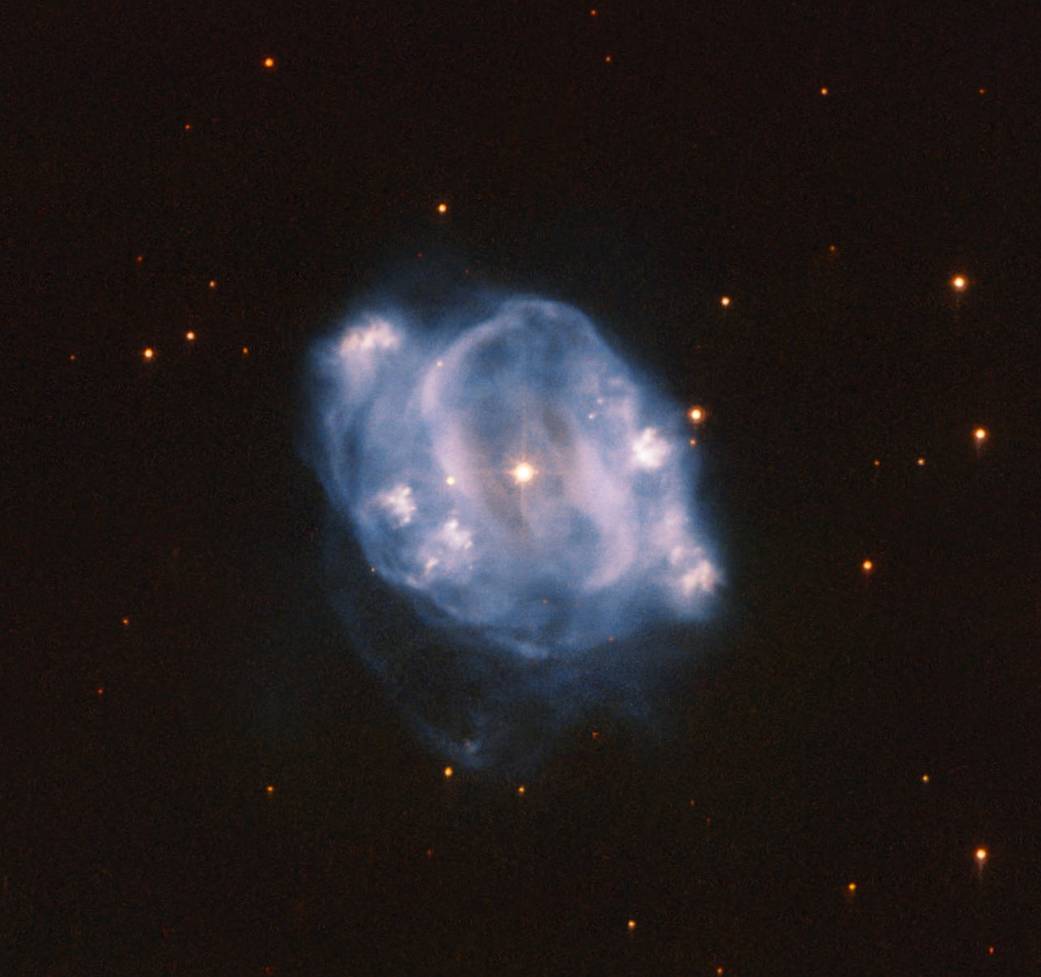This image from the NASA/ESA Hubble Space Telescope shows NGC 5307, a planetary nebula that lies about 10,000 light-years from Earth. It can be seen in the constellation Centaurus (the Centaur), which can be seen primarily in the southern hemisphere. A planetary nebula is the final stage of a Sun-like star. As such, planetary nebulas allow us a glimpse into the future of our own solar system. A star like our Sun will, at the end of its life, transform into a red giant. Stars are sustained by the nuclear fusion that occurs in their core, which creates energy. The nuclear fusion processes constantly try to rip the star apart. Only the gravity of the star prevents this from happening.
At the end of the red giant phase of a star, these forces become unbalanced. Without enough energy created by fusion, the core of the star collapses in on itself, while the surface layers are ejected outward. After that, all that remains of the star is what we see here: glowing outer layers surrounding a white dwarf star, the remnants of the red giant star’s core.
This isn’t the end of this star’s evolution though — those outer layers are still moving and cooling. In just a few thousand years they will have dissipated, and all that will be left to see is the dimly glowing white dwarf.
Text credit: European Space Agency (ESA)
Image credit: ESA/Hubble & NASA, R. Wade et al.
美国国家航空航天局/欧洲航天局哈伯太空望远镜拍摄的图像显示,NGC 5307是一个行星状星云,距地球约1万光年。它可以在人马座(人马座)看到,主要可以在南半球看到。行星状星云是类日恒星的最后阶段。因此,行星状星云让我们得以窥见太阳系的未来。像我们的太阳这样的恒星,在它生命的尽头,会变成一颗红巨星。恒星由其核心发生的核聚变维持,核聚变产生能量。核聚变过程不断试图将恒星撕裂。只有恒星的重力才能阻止这种情况的发生。
在恒星红巨星阶段的末期,这些力变得不平衡。如果没有足够的核聚变产生的能量,恒星的核心就会坍缩,而表层则会向外喷射。在那之后,这颗恒星的所有剩余部分就是我们在这里看到的:围绕着一颗白矮星的发光外层,这颗红巨星核心的剩余部分。
然而,这并不是这颗恒星进化的终点——那些外层仍然在运动和冷却。再过几千年,它们就会消散,剩下的就只有那颗黯淡发光的白矮星了。
资料来源: European Space Agency (ESA)
图片来源:ESA/Hubble & NASA, R. Wade et al.







